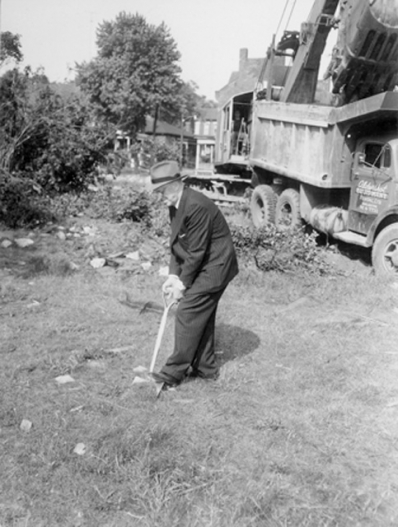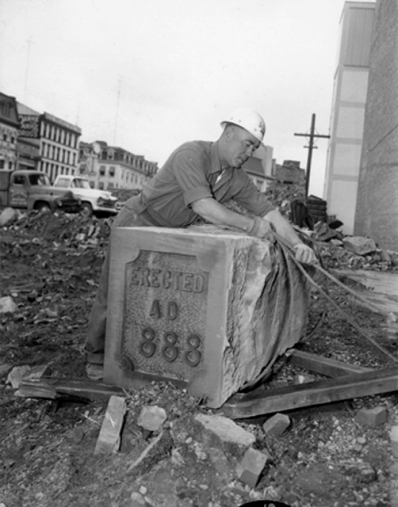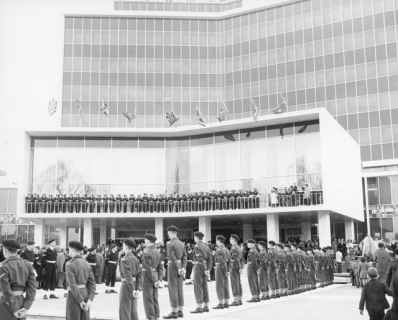The accessibility door at Waterdown Branch is not working. We aim to fix it quickly.
The Mountview stop at 5:30pm-6:30pm is temporarily changed to 4:45pm-5:30pm
All branches close early on Tuesday, December 30 at 6:00 PM (*with the exception of Carlisle, Freelton, Greensville, and Mount Hope) for holiday-adjusted hours. This includes branches with Extended Access.
*Carlisle- 10am - 3pm
Freelton- 9am - 2pm
Greensville- 9am - 2pm
Mount Hope- 10am - 3pm
The Makerspace at Central Library is currently out of white vinyl for printing. Members needing white vinyl can visit the Dundas or Valley Park branch Makerspaces, which are the closest locations with white vinyl currently available.
Due to maintenance, the Barton Branch will be closed on Wednesday, January, 7. Please visit Central Library or Kenilworth Branch for your library needs. www.hpl.ca/hours
Printing, photocopying and scanning are working at Westdale Branch. We're working to get these working again as soon as possible.
Daily print balances for black and white and colour printing change January 2, 2026. The new daily print balance is 40 cents. Members receive four free black and white copies or two free colour copies.
Large format and vinyl printing pricing also change on January 2. Visit https://www.hpl.ca/makerspaces for updates.
Bookmobile is off the road December 31, and January 1st. Visit www.hpl.ca/bookmobile for our Holiday Schedule.
Due to the setup for the Noon Hour Concert, the Fourth Floor at Central Library will be closed on Friday, January 2. Makerspace and Newcomer Learning Centre will remain open. Floors 1-3 have spaces to work and study.
All branches close on Thursday January 1 for New Years Day. This includes branches with Extended Access.
All HPL Branches close early on Wednesday, December 31 at 1pm. This includes branches with Extended Access.
Branch Study Halls are paused Friday, December 19, 2025 through Monday, January 5, 2026. Central Library Study Hall hours resume Spring 2026.
www.hpl.ca/study-halls
Bring back your borrowed library items (due Oct 1 or later) within 28 days to avoid a replacement or lost fee. We'll remove the fee when you bring back your overdue items.
History of City Hall

The tearing down of houses for the new city hall site began in June of 1958. The $9,400,000 project turned the first sod on July 2, 1958 (67). Mayor Jackson drove the steam shovel and Joseph Pigott took home movies (68). Meanwhile, the city hall committee was appointing a subcommittee to prepare a list of furniture that should be kept from the old city hall awaiting the creation of a city museum (69). Professor Eric Arthur was brought in as an expert to help them in their choices. Some of the material kept as mementos "to represent an era" included desks, chairs, benches, the large pictures of the former mayors, sections of brass railing, two fireplaces, two marble directories, clock mechanisms, doors, balusters, tables, clothes racks and the coronation chair (70).

Construction proceeded fairly smoothly but was not without its tragedies. On December 12, 1958, Ernest Quirt was killed when he fell through a hole in the scaffolding (71). On May 21, 1960, Lawrence Shaw died when the window washing machine he was using collapsed (72). Just prior to that, on May 15, 1960, two 200 pound slabs of marble fell off the building, one crashing to the ground and the other landing on a 7th floor canopy (72). The old city hall closed officially on October 28, 1960, and ownership transferred to Eatons. The new city hall opened for business at 8:45 a.m. on October 31, 1960 (73) . The official opening did not take place until November 21, 1960, when Governor-General Vanier officiated at the ribbon cutting.

Wrecking of the old city hall began in January of 1961 and was finished when the cornerstone was hauled away in June of that year. Most of the rock taken from the old city hall was reduced to rubble and used as fill for the wharf extension at Catherine Street. Some 500 tons of wall stone were placed in storage at King's Forest (74). It did not take long for the first problem with the new city hall to surface. In July of 1961 visitors to the city hall were puzzled to see red tape crisscrossing the automatic doors at the front of the building. This precaution followed the collision of a citizen with the front door: "[t]he glass didn't break but the citizen's head did and five stitches were needed to close a gash over his eye" (75). One of these doors subsequently exploded, showering the lobby with shards of broken glass (76). And then there was the marble, again. It seemed that the pins anchoring it could not hold it up and large chunks kept falling off.The City Hall soon became too small for the staff and various departments were moved to other accommodation throughout the city. The building itself was in serious need of repair as the city approached the new millennium. There were discussions on the feasibility of repairing the city hall or the alternative of tearing it down and starting over. There were even suggestions that the site be sold to a developer. In 2005 the City Hall was designated as a Heritage Site and in August of that year renovations began to restore the building to its former glory.












